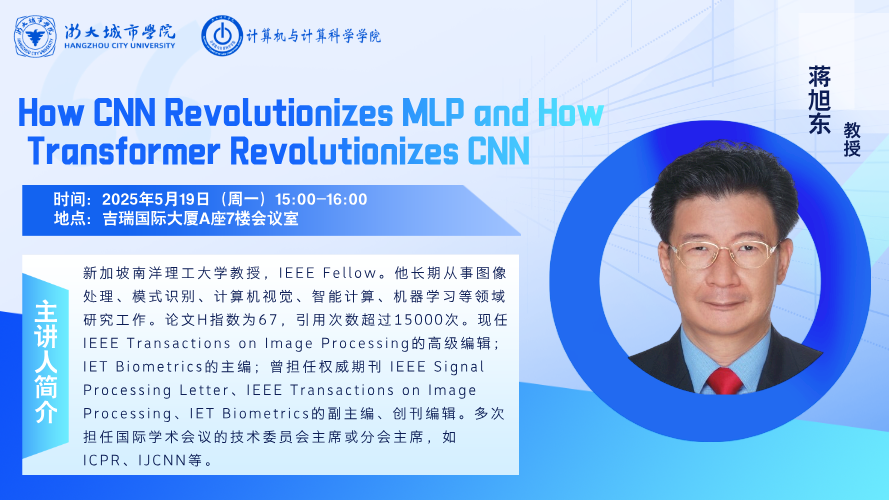| How CNN Revolutionizes MLP and How Transformer Revolutionizes CNN |
|
发布时间:
2025-05-12
15:07
浏览次数:
|
|
时间:2025-05-19 15:00 地点:吉瑞国际大厦A座7楼会议室 报名截止时间:2025-05-12 12:00 个人简历 新加坡南洋理工大学教授,IEEE Fellow。他长期从事图像处理、模式识别、计算机视觉、智能计算、机器学习等领域研究工作。论文H指数为67,引用次数超过15000次。现任 IEEE Transactions on Image Processing的高级编辑;IET Biometrics的主编;曾担任权威期刊 IEEE Signal Processing Letter、IEEE Transactions on Image Processing、IET Biometrics的副主编、创刊编辑。多次担任国际学术会议的技术委员会主席或分会主席,如ICPR、IJCNN等。 单位:新加坡南洋理工大学 报告主要内容 It is indisputable that the thriving artificial intelligence (AI) is mainly driven by machine learning. The powerful capacity of machine learning was already proven 40 years ago in the boom of neural networks but its successful application to the real world is just in recent years after the deep convolutional neural networks (CNN) have been developed. This is because the machine learning itself or alone can only solve problems in the training data but the system should be learnt for prediction from unknown data outside of the training set. This gap can be bridged by regularization: using human knowledge to guide or interfere the machine learning. This speech analyzes these concepts and ideas from traditional neural network MLP to the deep CNN and finally, the Transformer. It will answer the questions why the traditional neural network fails to solve real world problems even after 30 years’ intensive research and development and how CNN solves the problems of MLP and how Transformer overcomes the limitation of CNN and is now very successful in solving various real world AI problems in the form of large or foundation model. |
